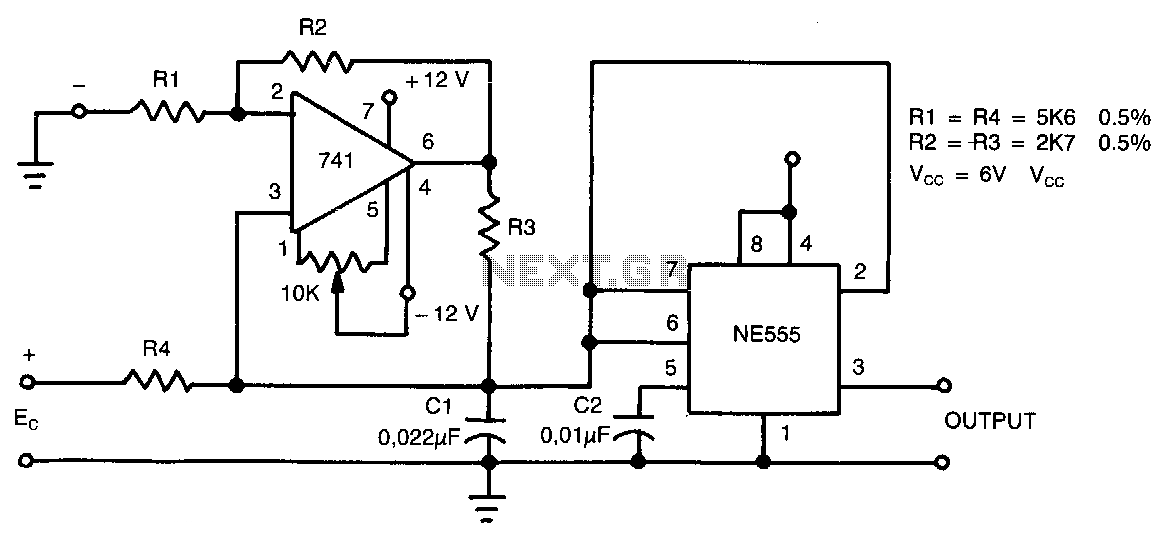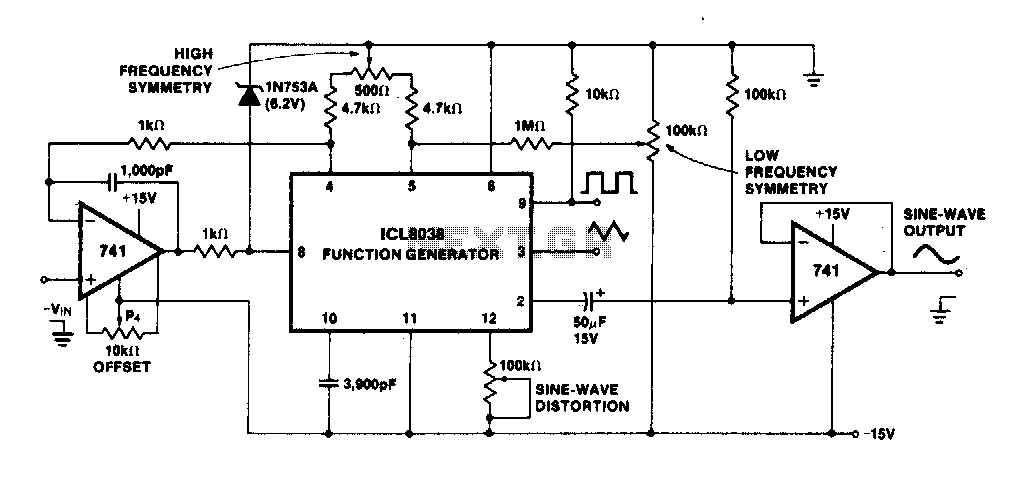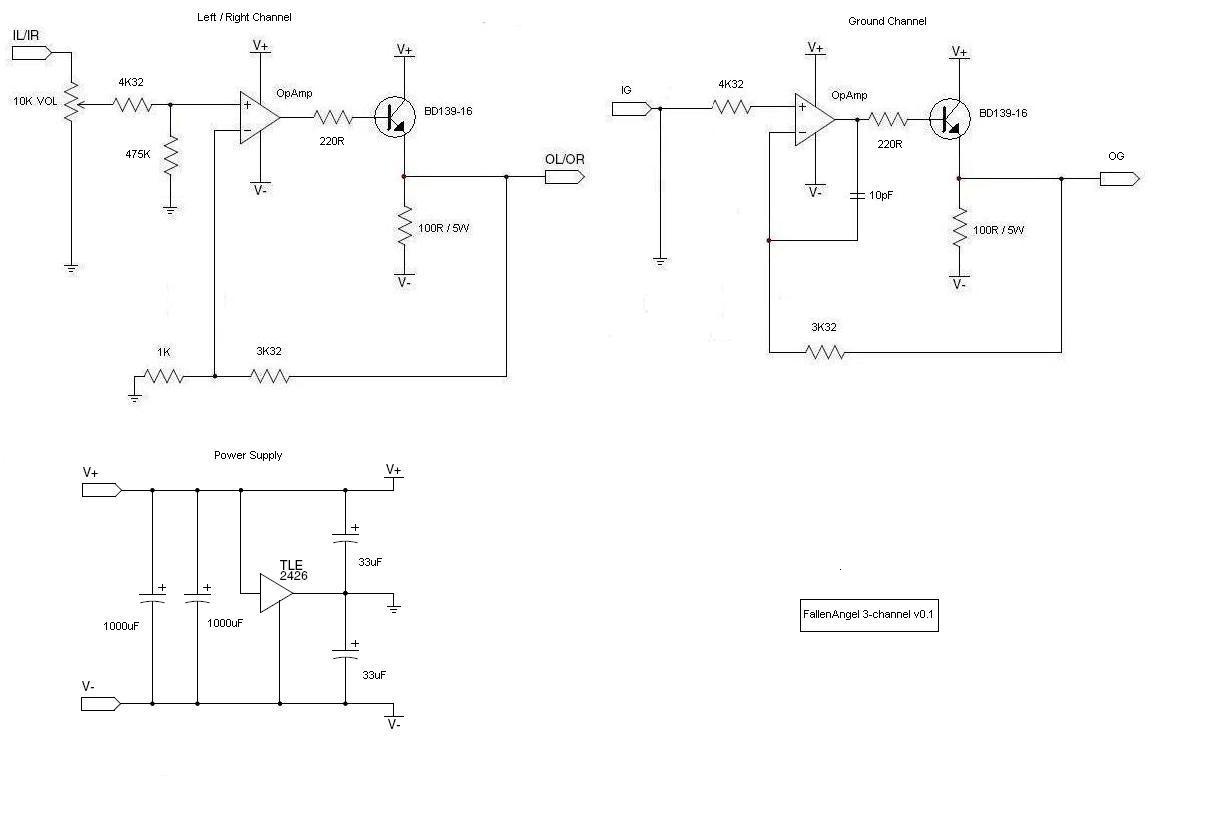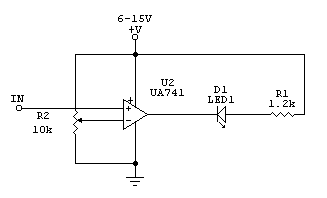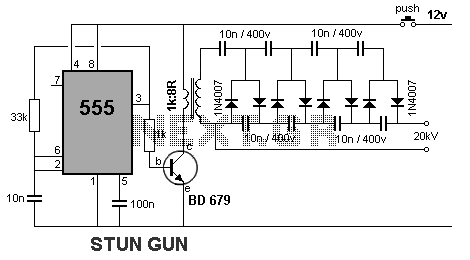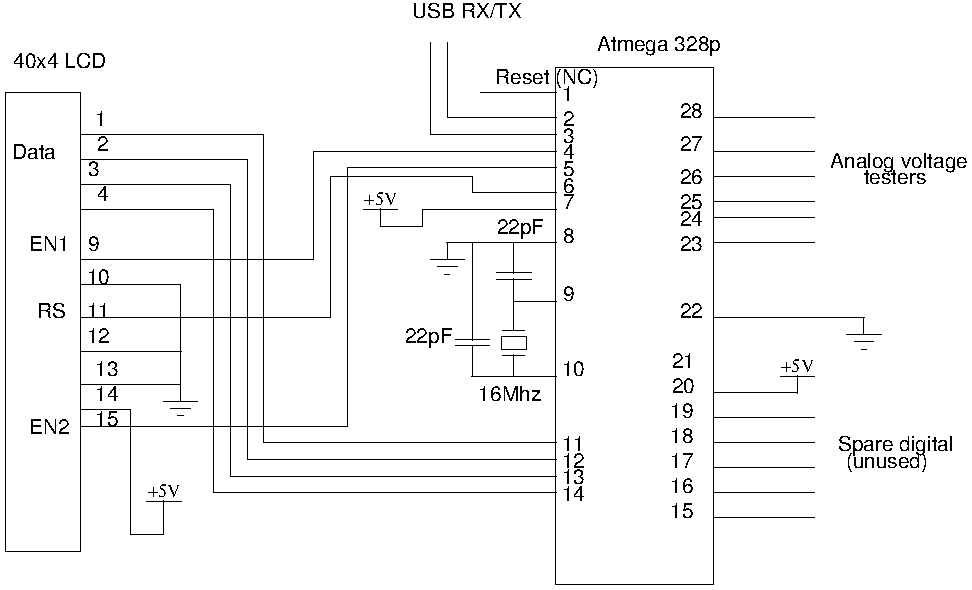
78xx Voltage Regulators
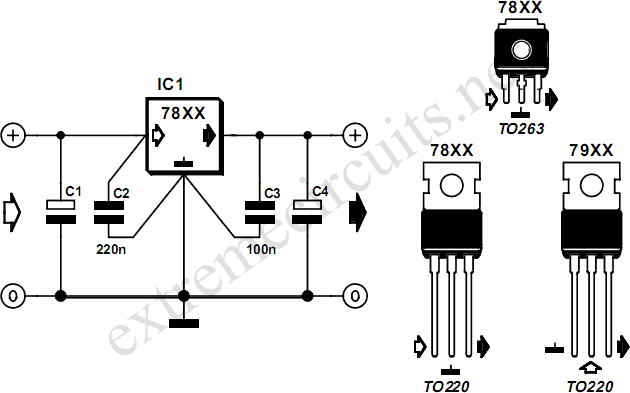
The voltage regulators from the 78xx series are commonly used in many analog power supplies. While it may seem unnecessary to elaborate on them due to their prevalence, it is beneficial to emphasize their key aspects. The 78xx series is typically utilized in its bare form, as additional components are generally not required. Only one extra component is necessary: capacitor C2, which should be 220nF according to the manufacturer's recommendation to prevent oscillatory behavior. In practice, a 100nF capacitor is often used, which does not cause issues. Capacitor C1 serves as the smoothing (reservoir) capacitor, aimed at reducing the ripple of the rectified AC voltage and is not directly related to voltage regulation. If the DC voltage is supplied by a mains adapter, this electrolytic capacitor is usually included, although its value may sometimes be small. C2 can be omitted if C1 is located close to the 78xx and is of good quality (low ESR), but it is advisable to include C2 for safety. A rule of thumb is to always place a 100nF capacitor on the input as close to the regulator as practicable. Although a capacitor on the output is not strictly necessary, a capacitor of at least 100nF (C3) significantly improves regulation during fast (several microseconds) load current changes. In practice, a decoupling capacitor is often placed near the power supply pins of many ICs, which can serve the same purpose if positioned nearby. An electrolytic capacitor (C4) may also be added to manage both slow and fast variations in load current. While there is no pressing need to address slow variations, the IC is capable of regulating them independently. A rule of thumb suggests placing an output capacitor of at least 100nF as close as possible to the IC with the highest current consumption, which typically experiences the greatest fluctuations in current. When assembling the circuit, it is crucial to connect the capacitors using the shortest possible path, avoiding long wires or large loops. The input voltage for the regulator should be obtained directly from the connections of the smoothing capacitor, as the ripple is minimized there. Regarding the temperature of a 78xx regulator, if it feels hot to the touch, indicating a temperature above 60 °C, a small heatsink is recommended. The IC is designed to handle excess heat by reducing the output current as the temperature rises. At an internal temperature of 150 °C, the output current will be slightly more than half of what it delivers at 25 °C. This phenomenon can lead to a drop in the output voltage of the regulator, even if the output current is below the IC's rated capacity. A heatsink is a practical solution to manage this heat. A rule of thumb states that the regulator (or heatsink) should be touchable without causing burns; if it is too hot, a larger heatsink is necessary.
The 78xx series voltage regulators are linear voltage regulators that provide a stable output voltage from a higher input voltage. They are available in various fixed output voltages such as 5V, 12V, and 15V, making them versatile for different applications. The input voltage must be higher than the desired output voltage by a certain margin, known as the dropout voltage, which is typically around 2V for these regulators.
The circuit configuration typically includes the voltage regulator IC, input and output capacitors (C1, C2, and C3), and sometimes an additional electrolytic capacitor (C4) for improved transient response. The input capacitor (C1) is essential for filtering the input voltage and reducing ripple, while the output capacitor (C3) enhances stability and transient response. The placement of these capacitors is critical; they should be located as close to the regulator pins as possible to minimize inductive effects and ensure effective decoupling.
Thermal management is crucial for the reliable operation of the 78xx regulators. The use of heatsinks can significantly improve thermal performance, especially in applications where high current loads are expected. The thermal resistance of the heatsink must be considered to ensure that the junction temperature of the IC remains within safe limits.
In summary, the 78xx series voltage regulators are straightforward to implement in analog power supply designs, requiring minimal external components while providing robust voltage regulation. Proper selection and placement of capacitors, along with adequate thermal management, are essential for optimal performance and reliability of the circuit.The voltage regulators from the 78xx-series are found in many analogue power supplies. It seems, then, somewhat super‚uous to say much more about them. But on the other hand, it can be very useful to highlight the important points, just because they are so ubiquitous. The 78xx is almost always used bare`, because additional components are almost unnecessary. In fact, only one additional component is required, and that is capacitor C2. Based on the manufacturer`s recommendation, this capacitor should be 220nF in order to prevent oscillatory behavior. In practice, you will almost always see that a 100nF capacitor used here. This is a value that does not cause problems. C1 is the smoothing (reservoir) capacitor, its purpose is to reduce the ripple of the rectified AC voltage and is not actually related to voltage regulation.
If the DC voltage is provided by a mains adapter, then this electrolytic capacitor is usually already part of the adapter, although the value is rather small sometimes. C2 may only be omitted if C1 is close to the 78xx and C1 is of good quality (low ESR). But there is nothing wrong by playing it safe and alwaystting C2. Rule of thumb: always place a 100 nF capacitor on the input as close to the regulator as is practicable.
Strictly speaking, there is no need for a capacitor on the output. However, a capacitor of at least 100 nF (C3) ensures much-improved regulation with fast (several microseconds) changes in load current. In practice, a decoupling-capacitor is placed close to the power supply pins of many ICs. These can provide the same function, provided they are placed not too far away. An electrolytic capacitor (C4) can be added for similar reasons: to catch slow (and fast, if it is a good capacitor) variations in load current.
There is actually no compelling reason to deal with slow variations, because the IC is fast enough of regulating these on its own. Rule of thumb: always place an output capacitor of at least 100 nF preferably as close as possible to the IC with the greatest current consumption (read: greatest changes in current consumption).
When building the circuit, it is important to connect the capacitors via the shortest possible path. So don`t use long wires or make large loops. Obtain the input voltage for the regulator directly from the connections of the smoothing capacitor, because the ripple is smallest there. Finally, a few remarks about the temperature that a 78xx may run at. As arst approximation, if seem to burn yourngers when touching the regulator, the temperature of the regulator is above 60 °C and a (small) heatsink is definitely recommended.
It is not really a problem when the IC gets too hot, because it was designed in such a way that it will turn itself off when the temperature is too high. It doesn`t actually turn off, but the output current reduces when the temperature increases. When the internal temperature has reached 150 °C, the output current will be only a little more than half the current delivered at 25 °C.
That is why it is possible that the output voltage of the regulator has dropped even though the output current is less than the rated current for the IC. A heatsink is the obvious solution. Rule of thumb: you should be able to touch the regulator (or the heatsink) without burning yourself. If not, then the heatsink has to be larger. 🔗 External reference
The 78xx series voltage regulators are linear voltage regulators that provide a stable output voltage from a higher input voltage. They are available in various fixed output voltages such as 5V, 12V, and 15V, making them versatile for different applications. The input voltage must be higher than the desired output voltage by a certain margin, known as the dropout voltage, which is typically around 2V for these regulators.
The circuit configuration typically includes the voltage regulator IC, input and output capacitors (C1, C2, and C3), and sometimes an additional electrolytic capacitor (C4) for improved transient response. The input capacitor (C1) is essential for filtering the input voltage and reducing ripple, while the output capacitor (C3) enhances stability and transient response. The placement of these capacitors is critical; they should be located as close to the regulator pins as possible to minimize inductive effects and ensure effective decoupling.
Thermal management is crucial for the reliable operation of the 78xx regulators. The use of heatsinks can significantly improve thermal performance, especially in applications where high current loads are expected. The thermal resistance of the heatsink must be considered to ensure that the junction temperature of the IC remains within safe limits.
In summary, the 78xx series voltage regulators are straightforward to implement in analog power supply designs, requiring minimal external components while providing robust voltage regulation. Proper selection and placement of capacitors, along with adequate thermal management, are essential for optimal performance and reliability of the circuit.The voltage regulators from the 78xx-series are found in many analogue power supplies. It seems, then, somewhat super‚uous to say much more about them. But on the other hand, it can be very useful to highlight the important points, just because they are so ubiquitous. The 78xx is almost always used bare`, because additional components are almost unnecessary. In fact, only one additional component is required, and that is capacitor C2. Based on the manufacturer`s recommendation, this capacitor should be 220nF in order to prevent oscillatory behavior. In practice, you will almost always see that a 100nF capacitor used here. This is a value that does not cause problems. C1 is the smoothing (reservoir) capacitor, its purpose is to reduce the ripple of the rectified AC voltage and is not actually related to voltage regulation.
If the DC voltage is provided by a mains adapter, then this electrolytic capacitor is usually already part of the adapter, although the value is rather small sometimes. C2 may only be omitted if C1 is close to the 78xx and C1 is of good quality (low ESR). But there is nothing wrong by playing it safe and alwaystting C2. Rule of thumb: always place a 100 nF capacitor on the input as close to the regulator as is practicable.
Strictly speaking, there is no need for a capacitor on the output. However, a capacitor of at least 100 nF (C3) ensures much-improved regulation with fast (several microseconds) changes in load current. In practice, a decoupling-capacitor is placed close to the power supply pins of many ICs. These can provide the same function, provided they are placed not too far away. An electrolytic capacitor (C4) can be added for similar reasons: to catch slow (and fast, if it is a good capacitor) variations in load current.
There is actually no compelling reason to deal with slow variations, because the IC is fast enough of regulating these on its own. Rule of thumb: always place an output capacitor of at least 100 nF preferably as close as possible to the IC with the greatest current consumption (read: greatest changes in current consumption).
When building the circuit, it is important to connect the capacitors via the shortest possible path. So don`t use long wires or make large loops. Obtain the input voltage for the regulator directly from the connections of the smoothing capacitor, because the ripple is smallest there. Finally, a few remarks about the temperature that a 78xx may run at. As arst approximation, if seem to burn yourngers when touching the regulator, the temperature of the regulator is above 60 °C and a (small) heatsink is definitely recommended.
It is not really a problem when the IC gets too hot, because it was designed in such a way that it will turn itself off when the temperature is too high. It doesn`t actually turn off, but the output current reduces when the temperature increases. When the internal temperature has reached 150 °C, the output current will be only a little more than half the current delivered at 25 °C.
That is why it is possible that the output voltage of the regulator has dropped even though the output current is less than the rated current for the IC. A heatsink is the obvious solution. Rule of thumb: you should be able to touch the regulator (or the heatsink) without burning yourself. If not, then the heatsink has to be larger. 🔗 External reference
